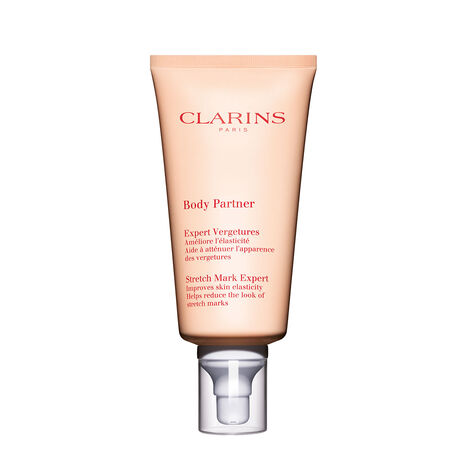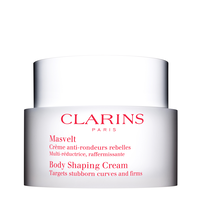Body Care Tips: What Causes Pregnancy Stretch Marks and How to Prevent Them?
Pregnancy is undoubtedly one of the most beautiful moments in one’s life. There is nothing more amazing than giving life to another human being. The journey itself is colourful; from the preparations to excitement, and from cravings to the ‘mum glow’. Part and parcel of the process is also pregnancy stretch marks.
These streaks (sometimes red, purple or silver), which appear on the stomach, hips, buttocks, thighs and chest, are absolutely common but more prevalent in pregnancy.
What causes stretch marks during pregnancy?
There are several reasons as to why stretch marks form during pregnancy, but here are the common culprits:
- Rapid weight gain
With the constant cravings that may happen during pregnancy, maintaining a healthy weight may prove to be a challenge for some expecting mothers. When weight is gained so fast during a limited period of time, the skin pulls apart and this causes tears that the body tries to fix as best as it can—although some scars still end up forming and remaining. This is the case with the expanding of the mid-section, which causes stretch marks on the belly. - Changes in hormone levels
Pregnancy hormones such as estrogen and cortisol may affect fibroblasts in the skin. Hence, collagen and elastin levels in pregnant mothers are reduced. With everything else on the body growing, stretch marks are a natural occurrence. - Poor diet and a lack of vitamins and nutrients
An expecting mother’s appetite during pregnancy can be somewhat unpredictable, and it may not always be the healthiest. When one’s regular diet is disrupted, especially since the mother-to-be is now eating for not just herself, the skin might not get sufficient vitamins and nutrients. As a result, the skin cannot cope with the rapid skin stretching caused by pregnancy. - Thin or Dry skin Those with thinner or dry skin have a higher tendency to develop stretch marks once rapid weight gain happens. Even though dry skin wasn’t a concern previously, hormonal changes during pregnancy may cause changes in your skin, making it more susceptible to pregnancy-related woes, including melasma, dermatitis and stretch mark formation. Thus, keeping skin hydrated with pregnancy-safe products throughout the term is the key to preventing stretch marks from forming, as postpartum treatment may not be as effective.
How to prevent stretch marks during pregnancy
There are certain steps that pregnant mothers can take to safeguard their skin during pregnancy. Most of these methods require some form of discipline in day-to-day habits, although there are certain products for stretch marks that can help with them.
Here are some ways stretch marks can be prevented:
1. Watch the weight
First and foremost, it is highly recommended that an expecting mother speak to their doctor about the best diet for both mother and child. The added weight is unavoidable—after all, they are carrying a growing baby.
2. Hydrate whenever possible
Water is important as is, but even more so for pregnant ladies who should keep themselves hydrated whenever they can. Water consumption aside, it is also vital to moisturise the body twice daily, with a body lotion such as the Moisture Rich Body Lotion which nourishes and soothes the skin. Applying moisturiser on the body would also help with itchy stretch marks, which happens due to dermal tearing.
3. Apply products that specifically help with stretch marks
Call it what you may: stretch mark removal creams, stretch mark lotions or pregnancy stretch mark cream—it is indeed a thing that is necessary for pregnant women. Products for stretch marks do, in fact, make a difference as to whether one will be sticking with the stretch marks for long or not.
There are several products that can specifically help with pregnancy stretch marks. The first would be the Exfoliating Body Scrub for Smooth Skin which is used at least once to twice a week to exfoliate current marks to make way for newer, firmer, younger-looking skin. This product would also help the skin absorb other treatments that will follow, such as the aromatic botanical Tonic Body Treatment Oil which works to improve the skin’s elasticity and prevent stretch marks, as well as a Body Partner stretch mark removal cream that reduces the appearance of current stretch marks and prevents future stretch marks from forming by boosting collagen production.
4. Do some light yoga
Staying physically active during pregnancy goes a long way. The key is to avoid yoga poses that require you to twist along the midline, and modify the moves for better support. For instance, for the revolved side angle pose, rest your elbow on your thigh and use it as support. If and when you feel tired or overwhelmed, stop and take a break.
5. Treat stretch marks as soon as it begins to form
Strike while the iron’s hot: successful treatment of stretch marks is wholly dependent on how fast one reacts to it. We recommend applying stretch mark creams even before traces of stretch marks begin to manifest on the skin and body. Once they start to form, it is best to treat it with anti-stretch mark creams immediately to lighten them.
Post-pregnancy care
Don’t neglect the skin and body after the bundle of joy is born, as this would also be a perfect time to treat stretch marks after pregnancy. Keep exfoliating the body once or twice a week with the Exfoliating Body Scrub for Smooth Skin to get rid of dead skin cells. Afterwards, follow up with regular use of Tonic Body Treatment Oil, an ideal pregnancy stretch mark oil due its aromatic essential oils and hazelnut oil rich in vitamins A and E, which would also deliver a feeling of wellbeing. Finish off your post-pregnancy ritual with an Extra-Firming Body Cream to firm up the skin after fluctuations in weight. For those who face sagging bust that may be caused by breastfeeding and the changes in bust size, go for bust-firming lotions that aid in firming, toning and enhancing the shape of your breasts.
Check out the Clarins range of pregnancy-safe skincare products here





